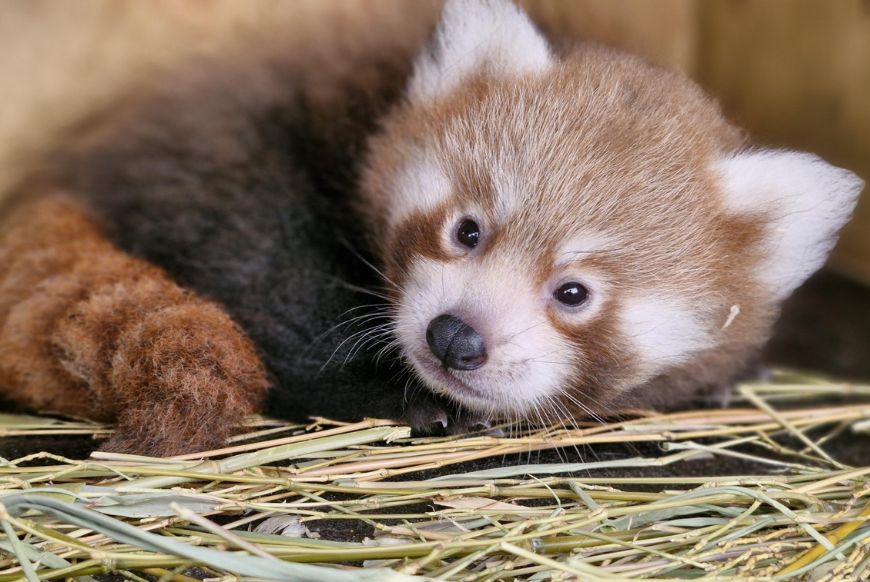An endangered red panda cub born at Bristol Zoo Project is preparing to venture out of its nest box for the first time, as keepers reveal it’s a girl!
The female was born at the zoo on June 26, to first time parents Neora and Laya. She has now received her first veterinary health check and is said to be healthy and feeding well, weighing in at 780g – around the same as a large loaf of bread.
Until now, the cub has been looked after by mum Laya in one of three nest boxes in the zoo’s red panda habitat. As she is almost two months old, she is expected to emerge from the nest box at any time, to start exploring the outside world for herself.

Image - Bristol Zoo Project
Nigel Simpson, Head of Zoo Animals at Bristol Zoo Project, said: “We are all thrilled to see Neora and Laya’s new cub thriving. As a first-time mum, Laya has done a fantastic job of caring for her cub and ensuring it is safe, fed and well.
“This is a huge conservation win for this Endangered species. The wild population is thought to be as low as 2,500 individuals, threatened by habitat loss and poaching. Laya and Neora arrived at Bristol Zoo Project in 2024 as part of EAZA’s critical breeding programme to help protect the species, which we are a part of. So, the cub’s arrival is very special indeed.
“As you can imagine, everyone is on tenterhooks waiting to see the baby emerge for the first time. Some lucky visitors have captured a glimpse of her when Laya has moved her between nest boxes, as she would do in the wild. Soon the cub will be exploring her new home on her own, though she’ll still rely heavily on mum for the next few months, and will then start to wean from around six months old.”
Now vets have determined the cub is a girl, the public’s help is needed to name her. Keepers have shortlisted three names, which reflect Bristol Zoological Society’s global conservation work, and a public poll will open on Friday morning (August 22), on the zoo’s Facebook page. The names are:
- Asha – which means ‘hope’ in Nepali/Sanskrit
- Banita – meaning ‘cherished’ in Nepali/Sanskrit
- Malika - a popular girl's name used in the Himalayan regions, meaning ‘flower bud’ in Nepali
Red pandas are native to the eastern Himalayas and south-western China. They spend most of the day resting in trees, conserving their energy, and are usually solitary creatures, though come together in pairs during the breeding season.
Laya is named after a town and a valley in Bhutan in Asia, where red pandas are found in the wild. Neora is named after Neora Valley National Park where animals from the red panda GSMP (Global Species Management Programme), which the zoo’s red pandas are part of, are being introduced back into the wild to increase the wild population numbers.
Bristol Zoo Project is owned and run by conservation and education charity Bristol Zoological Society. At the zoo, 85% of the animals it cares for are both threatened, and part of targeted conservation programmes. Its aim is for this to rise to 90% of species by 2035.
As well as trying to spot the new cub, this summer and autumn, visitors can also take on the Andy’s Adventures Explorer Trail. The family trail is based on the hugely popular CBeebies series Andy’s Adventures, starring Bristol Zoo Project ambassador Andy Day.
In spring 2025, the zoo is opening a new African Forest habitat which will become home to its much-loved troop of Critically Endangered western lowland gorillas. They’ll live alongside many other highly threatened species including cherry-crowned mangabey monkeys, slender-snouted crocodiles, African grey parrots and several species of West African freshwater fish.
To find out more about Bristol Zoo Project and Bristol Zoological Society’s conservation programmes across the globe, visit www.bristolzoo.org.uk.
Related
Comments
Comments are disabled for this post.











